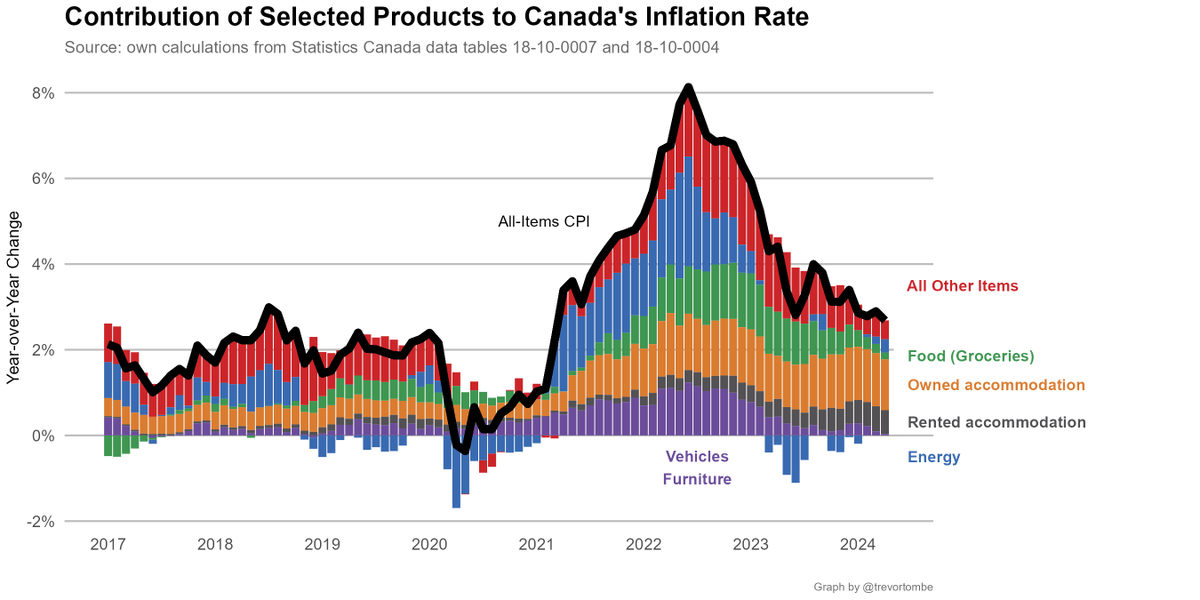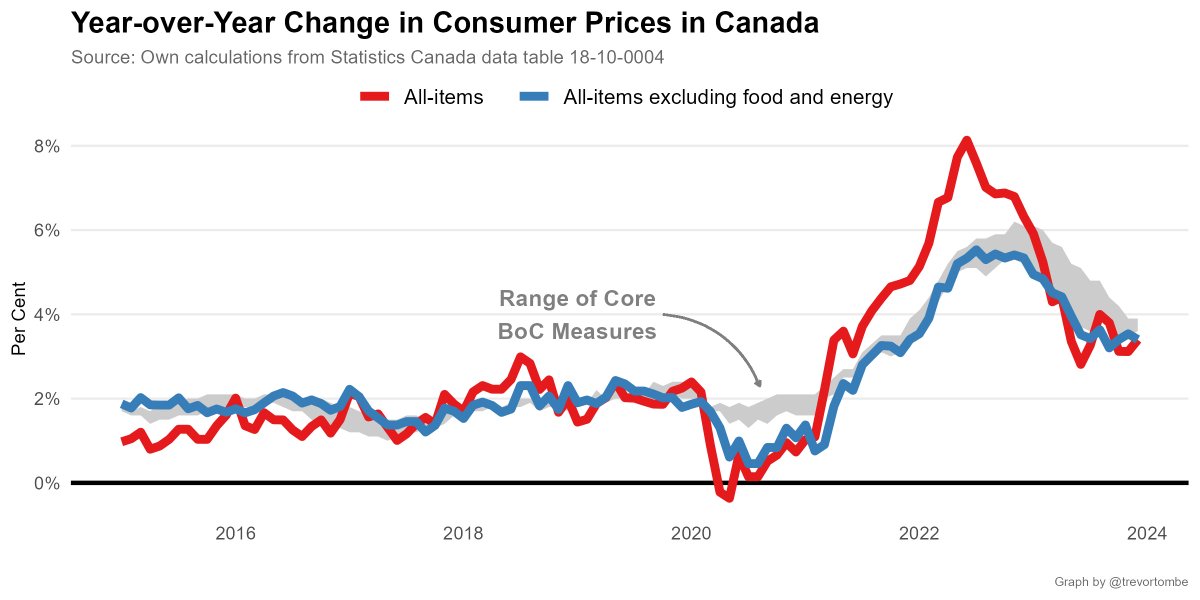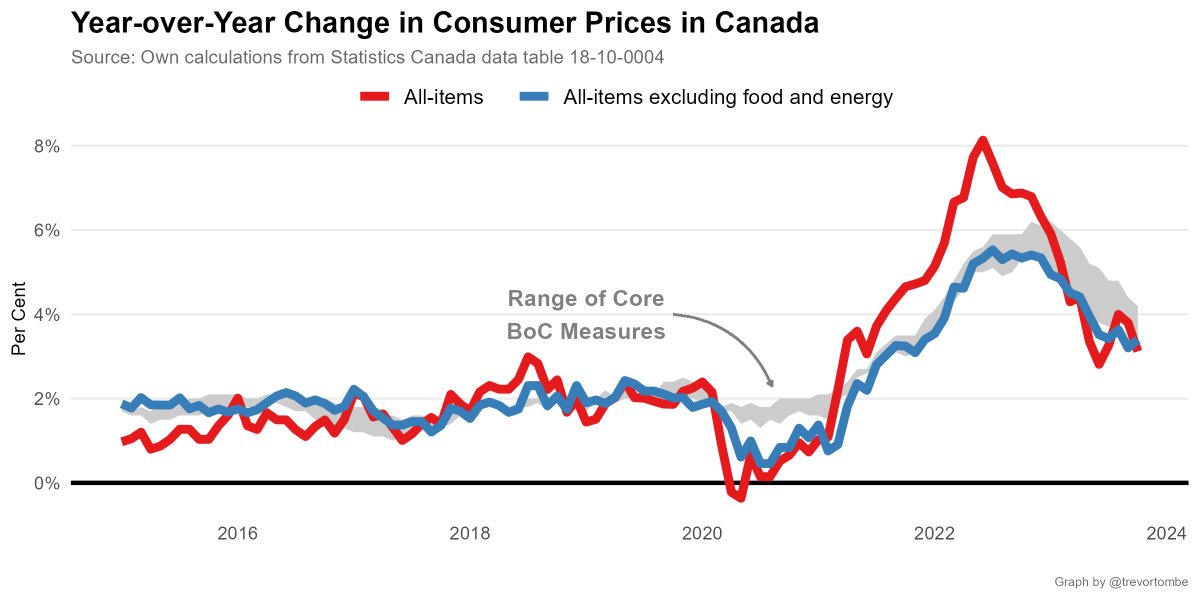Today's vaccine update:
- Shots reported today*: 401,833 (59% 2nd doses)
- Total shots: 27,257,480
- Age 12+ w/ a Shot: 71.8%
- Age 18+ w/ a Shot: 73.6% (est)
- Shots per 100 people: 71.7
- Inventory: 7.8 days
More: trevortombe.github.io/covidgraphs/
* Missing YT (not reported yet)
- Shots reported today*: 401,833 (59% 2nd doses)
- Total shots: 27,257,480
- Age 12+ w/ a Shot: 71.8%
- Age 18+ w/ a Shot: 73.6% (est)
- Shots per 100 people: 71.7
- Inventory: 7.8 days
More: trevortombe.github.io/covidgraphs/
* Missing YT (not reported yet)

The latest estimates of vaccinations by age:
- Those 60+: 89.4% have at least one dose and 19.4% have two
- 18-59: it's 66.6% and 8.3%
- Adults: 73.6% and 11.7%
Note: data comes with a 6-13 day lag; these are my own estimates
- Those 60+: 89.4% have at least one dose and 19.4% have two
- 18-59: it's 66.6% and 8.3%
- Adults: 73.6% and 11.7%
Note: data comes with a 6-13 day lag; these are my own estimates

In total, Canada is now up to 27.3 million shots given -- which is 90.0% of the total 30.3 million doses available. Over the past 7 days, 2,141,010 doses have been delivered to provinces.
And so far 3.4 million are fully vaccinated with two shots.
And so far 3.4 million are fully vaccinated with two shots.

Canada's daily pace:
Today's 401,833 shots given compares to an average of 390,774/day over the past week and 369,003/day the week prior.
We can use the latest average daily pace to project where vaccination rates are soon headed.
Today's 401,833 shots given compares to an average of 390,774/day over the past week and 369,003/day the week prior.
We can use the latest average daily pace to project where vaccination rates are soon headed.

Based on that average pace, and a model of 1st vs 2nd shots, here's a projection of where we're headed:
- 75% of people with a shot: June 14
- By Canada Day: 80.5% with 1+ doses and 27.5% with 2
- Match current U.S. fully vax rate: July 22
- 75% fully vaccinated: August 13
- 75% of people with a shot: June 14
- By Canada Day: 80.5% with 1+ doses and 27.5% with 2
- Match current U.S. fully vax rate: July 22
- 75% fully vaccinated: August 13

Dose projections are informative, but effective protection is lower than the share with a shot. One dose is less effective than two, plus effects lag and are uncertain. Roughly, current "coverage" is ~22-47%
Useful research summary: publichealthontario.ca/-/media/docume…
Useful research summary: publichealthontario.ca/-/media/docume…

Turning to individual provinces, here's total shots given and share of delivered doses used.
- Most shots given: YT at 130 doses per 100 people
- Fewest: PE at 65
- Highest share of delivered doses used: AB with 96%
- Lowest: NU with 65%
- Most shots given: YT at 130 doses per 100 people
- Fewest: PE at 65
- Highest share of delivered doses used: AB with 96%
- Lowest: NU with 65%

A more detailed look at provs/terrs:
- Highest overall: YT at 69% receiving at least one shot
- Most 1st doses only: NL at 59% receiving that shot
- Most Fully Vaccinated: YT at 60%
- Fewest Vaccinated: NU at 45%
- Highest overall: YT at 69% receiving at least one shot
- Most 1st doses only: NL at 59% receiving that shot
- Most Fully Vaccinated: YT at 60%
- Fewest Vaccinated: NU at 45%

How does Canada compare to others? Here's all 37 OECD (i.e., developed) countries:
- Share of pop. w/ at least one dose: Canada ranks 2nd
- Total doses per 100: 7th
- Fully vaccinated: 31st
- Share of pop. w/ at least one dose: Canada ranks 2nd
- Total doses per 100: 7th
- Fully vaccinated: 31st

The above picture hasn't changed much in a while, but it looks like tomorrow Canada will move into 1st in the OECD for the share of its total population with at least one dose. 

Canada/US comparison.
Received at least one dose:
- Top Prov: QC, 66.1% of pop
- Top State: VT, 71.7
- Top Terr: YT, 69.2
Fully vaccinated:
- Top Prov: AB, 13.5% of pop
- Top State: VT, 59.5
- Top Terr: YT, 60.5
Interactive plot here: trevortombe.github.io/covidgraphs/usa
Received at least one dose:
- Top Prov: QC, 66.1% of pop
- Top State: VT, 71.7
- Top Terr: YT, 69.2
Fully vaccinated:
- Top Prov: AB, 13.5% of pop
- Top State: VT, 59.5
- Top Terr: YT, 60.5
Interactive plot here: trevortombe.github.io/covidgraphs/usa

Going forward, here's a cdn/usa comparison of total doses per 100 people.
- In Canada, this rises by 1.03 per day. The US rises by 0.34 per day.
- Projected out, we match the US in 29 days
- Reaching the current US rate takes 20 days.
- In Canada, this rises by 1.03 per day. The US rises by 0.34 per day.
- Projected out, we match the US in 29 days
- Reaching the current US rate takes 20 days.

Of course, there's lots of countries and many ways to compare. Here's a selection across several metrics/groups of how Canada ranks globally. Pick your preferred measure! 

Fin.
Note: all graphs (and more!) are automatically updated and posted online for later review and easy sharing at the following site: trevortombe.github.io/covidgraphs/
Note: all graphs (and more!) are automatically updated and posted online for later review and easy sharing at the following site: trevortombe.github.io/covidgraphs/
• • •
Missing some Tweet in this thread? You can try to
force a refresh


















